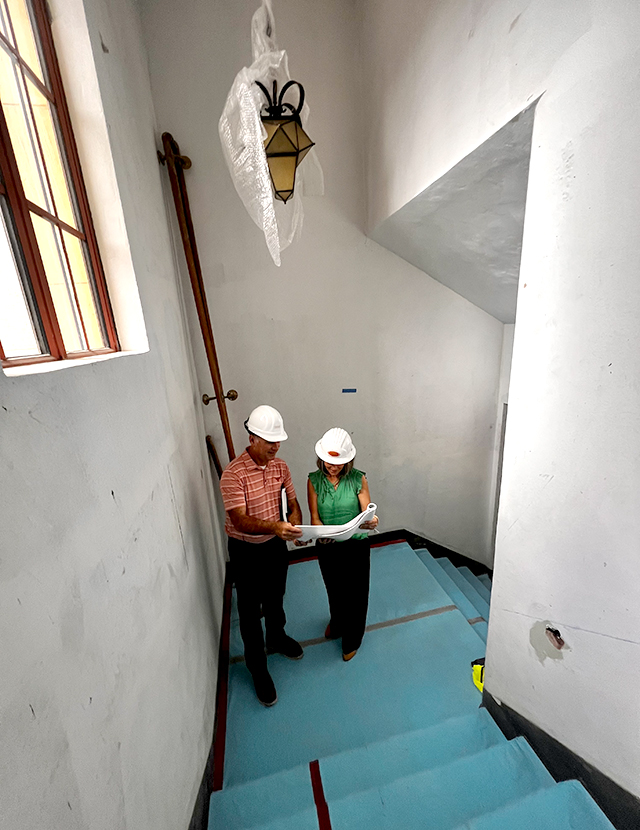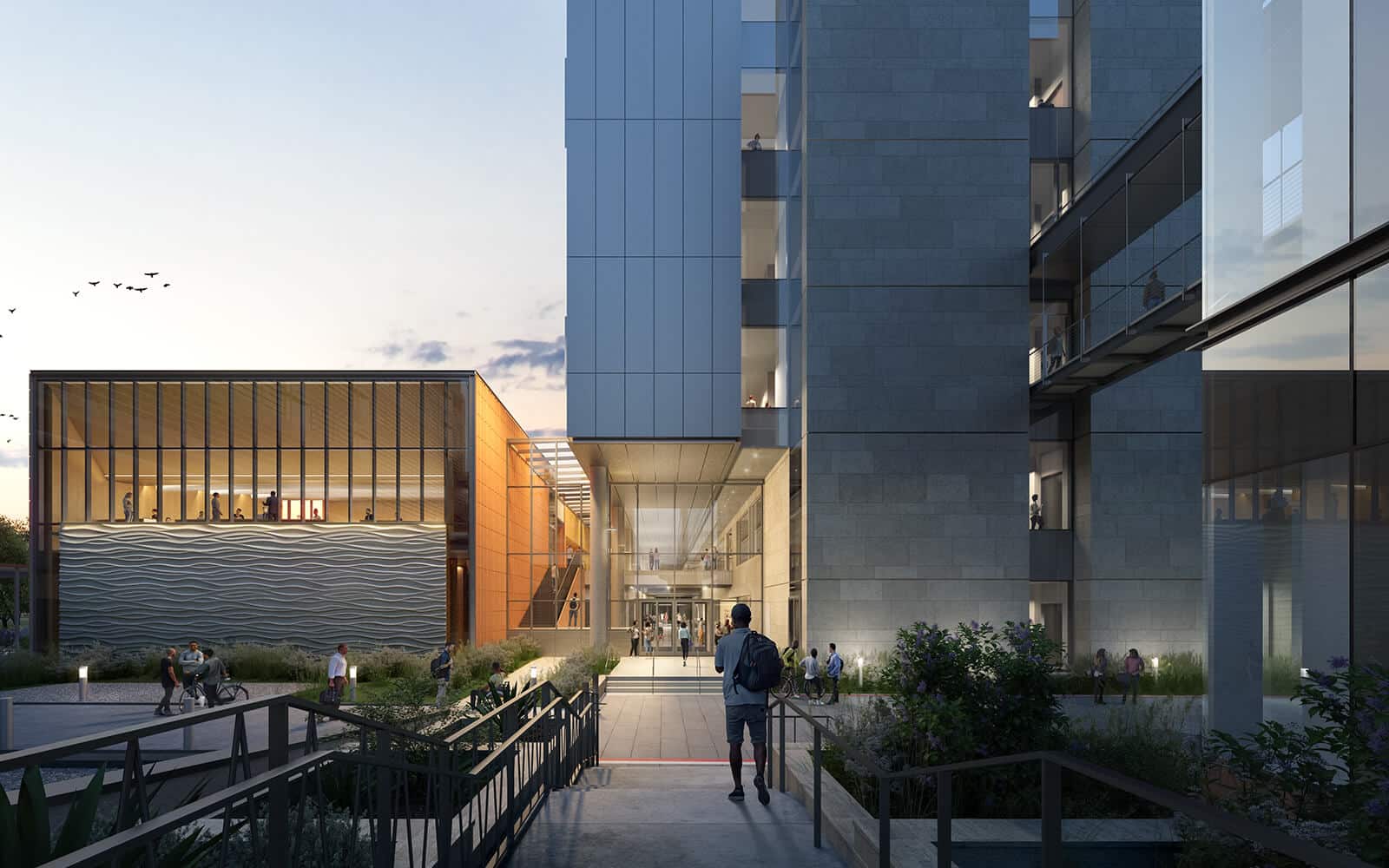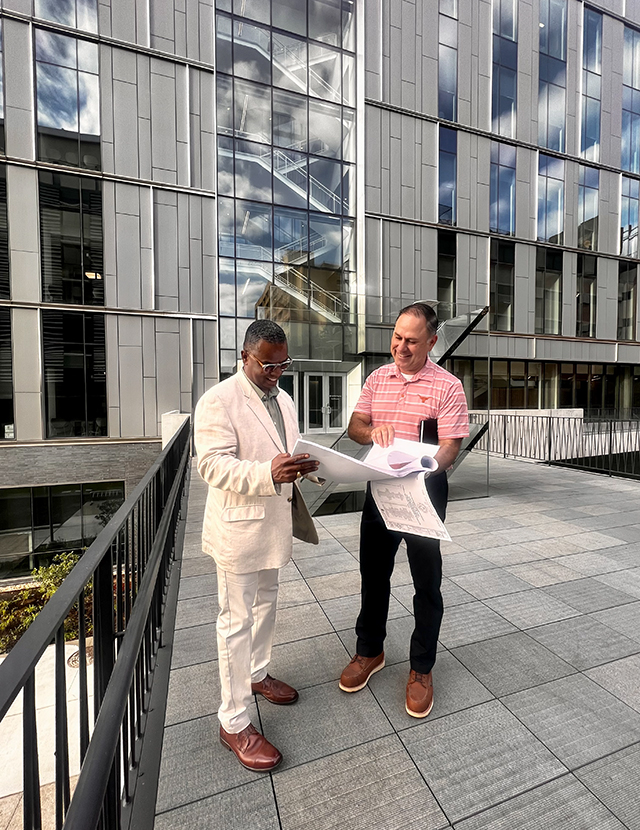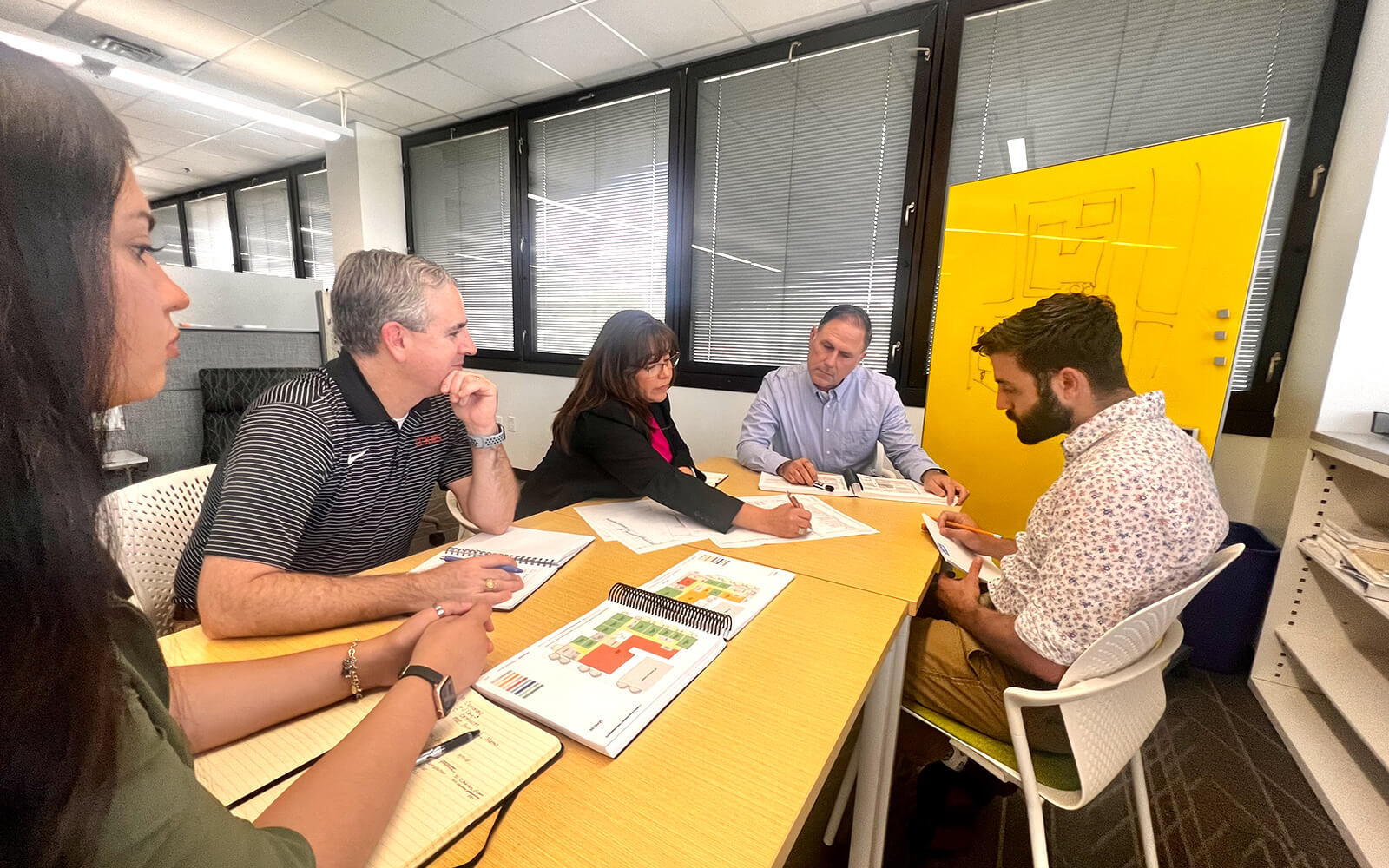|
Getting your Trinity Audio player ready...
|
Dan Cook came to The University of Texas at Austin (UT Austin) with a unique set of experiences that have prepared him well for the work in higher education. The US Navy veteran, now executive director of campus construction, spent over 20 years overseeing construction, facilities, and operations for critical military functions. Early in his career, when the Navy elected to merge three boot camps into one, Cook oversaw the billion-dollar recapitalization of the Great Lakes Recruit Training Command in Illinois that would become the hub for all new recruits.
“That project involved new dormitories, new eating facilities, new training facilities, new classrooms, and learning spaces,” Cook details. “In many ways, it’s a lot like a campus. And while the government doesn’t get a lot of credit for being innovative, I saw incredible innovation from fast-paced execution to sustainability initiatives. All similar priorities at the university.”

Valerie Nies
Over two decades, Cook (a licensed architect) grew from first learning how to make steam, electricity, and potable water aboard a Navy vessel to leading specialized teams charged with acquiring, designing, and building services for the Navy, in collaboration with both governmental and private stakeholders and partners. Today, he joins an incredible construction team to build the facilities for a first-class university whose mission is world-changing educational excellence.
And that requires excellent buildings.

Valerie Nies
Best-in-Class Builds
The facilites and construction program at UT Austin currently has a full plate of builds, renovations, and projects seeking to modernize its campus while also maintaining historical landmarks, like the 88-year-old Hogg Memorial Auditorium, a popular venue for student and university events. The auditorium renovation included permanent wheelchair lifts for the stage, better accessibility, and more upgrades to comply with all current standards.
Given the age of the buliding, the $27 million project also included complete overhauls to its electrical, mechanical, and plumbing systems; new seating and a new roof; and is setting standards as a candidate for LEED Platinum certification.
His team is also excited to partner with a larger number of stakeholders both inside and outside UT Austin to unite undergraduate students with MBA candidates in the university’s nationally ranked McCombs School of Business, bringing a whole new slate of future business leaders into the world.

This furthers UT Austin’s dedication to providing superior educational opportunities for students and advancing society via scholarly inquiry, research, and the dispersal of new knowledge.
The new undergraduate and faculty building will move adjacent to existing MBA and executive education facilities. Locating all business classes near business faculty, student services, and experiential opportunities will create a whole community of collaboration, research, and learning.
“The university has been able to acquire parcels to create a new site that’s essentially a business school neighborhood,” Cook explains. “This will be a transformative experience for students to engage in learning in state-of-the-art learning facilities surrounded by their peers.”
The new build will include classrooms, labs, career services centers, community spaces, a café, and diverse study spaces and different learning environments to make students feel at home—no matter their study style. The multistory building will also contain some fantastic views of the campus and city of Austin.

Bringing stakeholders to the table as early as possible to address their needs, wants, and expertise is a stated goal for Cook in a project of this complexity.
“If you wait too long to bring in experts or affected stakeholders, they’re probably going to point out something very obvious that we should have planned around earlier,” the executive director says. “There are a lot of functional, utility, and structural requirements to balance with the aspirations of the people who will be occupying the space. Those competing interests need to be harmonious.”

Valerie Nies
Cook’s partners at Gensler are proud to be part of that large effort. “The complex coordination of the Moody Center building construction, surrounding infrastructure, new Robert Dedman Drive, and the foresight into [UT Austin’s] future growth was executed successfully with UT Campus Construction, Oak View Group development team, and Gensler’s partnership,” says Todd Runkle, Gensler’s principal and managing director. “Through this collaboration, our collective vision was brought to life.”
Rebuilding Foundation
When it comes to the extensive relationship-building across countless stakeholders, Cook’s expertise has, again, been a value-add for his team.
On one particular project, long-running tension between the university and general contractor had created frustration on both sides. When Cook sought out his counterpart in their construction partner’s office, they found they had Naval service in common.
Cook asked his colleague to sit down and help resolve some of the tension and was surprised to find out the issues hadn’t been made known further up the flagpole.
“We were able to create trust with one another and the right level of the organization to really work together,” Cook explains. “That’s how I see my role as a leader. I want to clear roadblocks out of my people’s way. I think people can struggle with needing to overcome issues that might be above their responsibility, and I want to make sure those issues are made known so I can resolve them. Whatever I can do to help, that’s where I want to spend my time.”

Valerie Nies
Cook jokes that the SEALs and the UT Austin athletics department have more in common than most people might think: high standards, a clear sense of identity and brand, and a sense of mission.
It’s not ships and squadrons, but Cook’s second act is working with a dedicated and talented team to serve a student body who has the bold charge to change the world.
Gensler is a global architecture, design, and planning firm with 53 locations and more than 7,000 professionals networked across the Americas, Europe, Greater China, Asia Pacific, and the Middle East. Founded in 1965, the firm works globally with more than 4,000 clients across more than 29 practice areas spanning the work, lifestyle, community, and health sectors. We are guided by our mission to create a better world through the power of design, and the source of our strength is our people. By leveraging our diversity of ideas, our research and innovation, our shared values, and our One-Firm firm culture, we are working seamlessly as a borderless firm in 140 countries and making the greatest impact on our communities as we continue to tackle the world’s challenges. For more information, please visit gensler.com.


